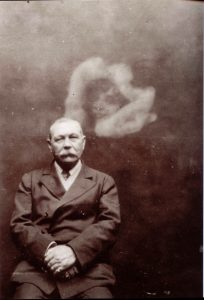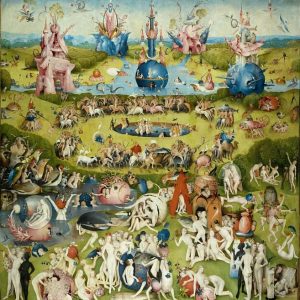
The project is the result of an international partnership, involving IELT, CICS.NOVA/Faces de Eva, of the Faculty of Social and Human Sciences of the Lisbon Nova University, and CRILUS/UR Études Romanes, of the University of Paris Nanterre.
It aims to integrate writing by women into the literary heritage, promoting the knowledge, unveiling and dissemination of female writers who published between 1926 and 1974, as well as their works, since, even with regard to the 20th century, the canon of Portuguese literature is essentially male. The social, cultural and political context in which much of these women’s production emerged points to writing as an act of courage, in some cases punished with silencing, persecution or erasure.
The project is based on two distinct but complementary pillars:
A) The holding of international colloquia:
– Ver/Rever a Escrita de Mulheres em Portugal (1926-1974), 5 and 6 March 2020 (Almada Negreiros College – NOVA FCSH Campolide Campus)
– Voir/Revoir l’écriture de femmes au Portugal (1926-1974), 9 October 2020 (Université Paris Nanterre)
– Maria Judite de Carvalho: les frontières de l’humain face aux débris du monde, 15 March 2021 (Université Paris Nanterre)
– Maria Archer: reflexos e reflexões, 24 January 2022 (National Library of Portugal)
The volume Escritoras portuguesas no tempo da Ditadura Militar e do Estado Novo, col. “Mondes de Langue Portugaise”, Peter Lang – Bruxelles, to be published in 2022, gathers some of the most relevant contributions produced so far within the project, whose results have already been presented and discussed in the first two colloquia.
Within the framework of the “Temporada França-Portugal 2022”, two other international colloquia will be held on the theme of the project, of which they have received the seal, thus integrating the official programme:
– 24 February 2022, at the Université Paris Nanterre, France
– 13 and 14 October 2022, at the Lisbon Nova University, Portugal
In both editions, emphasis will be given to Novas cartas portuguesas of the ‘Three Marias’ marking the fiftieth anniversary of the seizure by the Censorship that generated a wave of solidarity on the part of French women writers.
B) The creation of an “open” database.
It consists of the cataloguing and analysis of the literary production of Portuguese and/or Portuguese-speaking women authors from African, Asian or countries where Portuguese emigration created centres of language and culture, who published between 1926 and 1974.
The inclusion of the authors/works in the database was determined by the following criteria:
1. They are Portuguese and/or Portuguese-speaking, although they may have published in languages other than Portuguese;
2. They published during the defined time frame, i.e., between the years 1926 and 1974 (they may have also published before and/or after);
3. They published “work”, conceived only as a publication in a volume (which does not invalidate the fact that they may have had other types of written and/or spoken intervention in newspapers or other media, made translations, etc.). In other words, the criterion of publication in a volume is necessary but not exclusive.
Each of the authors is presented in an “author profile” according to the fields defined in it, and each of their works is presented individually, also according to the fields defined in the “work profile”.
This database is an open and continuous resource to support research, suggesting possibilities of dialogue among researchers. We appeal, therefore, to the collaboration of all those who wish to help to complete it with new authors or to improve what is now presented. Due to the extension of the work of some of the authors, the profiles presented here may be incomplete, as the research team is continuing to develop them. In this case, the indication “under development” will be given in the author’s profile.
The diversity and multiplicity of sources and resources make it unfeasible to present the contents in an entirely uniform way, a fact to which we have resigned after some initial utopia, when we thought it was possible. One of the fields inserted “gender” posed some questions to the team due to the hybrid character of certain works. The identifier [NI] means that it was up to the person making the inventory to decide how to fill it in. We used the field “observations” to explain some of the doubts we had, but also to complete information that could not be filled in anywhere else.
The publishing date of many works was not found, so we considered an “assigned date” based on elements that can either be related to a date written by the author as the end of the book, or the date of entry into the library deposit where it is found, or by indications (not always precise) written in newspapers or critical pieces, or even in other works that make reference to them.
We have chosen to use the APA 6 norms, but here too, the specificity of some situations has obliged us to adapt them so that the information provided is clear and allows for the most detailed consultation possible.
The authorship of the files is indicated at the end of the “Authors’ profile”, with many thanks to all the researchers who agreed to collaborate in this project, to those who participated in its revision and also to the authors or family members who not only made themselves available to complement the information, but also ceded the rights of use of the images appearing on the files. The initial team that designed and structured the contents of the database was joined by a research scholarship holder and a group of people who made inventories, identified in the “Team” tab.
The tab “Texts” has been created to enable the users of the database to enjoy unpublished or little-known texts by the identified authors. It includes literary productions sent to us by the authors, their families and researchers.
The contact with the research team will be made by filling in a form, hosted in the tab with that title.
The work of surveying the authors who meet the criteria for inclusion in the database was very extensive and constitutes in itself a precious research aid for all those who wish to promote and deepen their knowledge of women writers with published work in the defined timeframe. The tab “Initial survey” is liable to be expanded through the identification of more women writers, which will enrich the fields of study of literature, history and gender studies.
The present research follows almost entirely the time of the pandemic, so the conditions under which it was carried out reflect the difficulties experienced by the research team, namely in the consultation of works available in different libraries, but also in the limited or impossible face-to-face meetings. In this sense, the number of authors that, for now, this database includes is much lower than the authors we identified in the first moment of the research and much lower than all those we were meeting during the time the fieldwork took place. Despite the constraints, its richness allowed us to reaffirm the need to recover authors and works, to stabilize sources, to make urgently visible an authentic “underground world” in which women writers who published in their time are still found, despite the various efforts that have been made lately to give them existence



